 |
Chromic Chloride or Chromium Chloride Hexahydrate SDS Safety Data Sheet of Supplier Exporter Manufacturers' Representative |
Email: info@ammol.org |
Call Toll Free +1-855-552-6665 |
Chromic Chloride or Chromium Chloride Hexahydrate
CAS Number: 10060-12-5
Molecular Formula: CrCl3-6H2O
Molecular Weight: 266.45
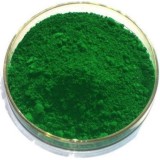
Chromic Chloride Hexahydrate or Chromium Chloride Hexahydrate
Chromic Chloride SDS, Safety Data Sheet
MSDS Sheet, Material Safety Data Sheet 04-Feb-24
Section 1: Product and Company Identification
Product Name & Other Names: Chromic chloride hexahydrate or Chromium chloride hexahydrate
CAS No.: 10060-12-5
EINECS, EC Number: 233-038-3
Relevant uses and uses advised against (if any): Industrial use only.
Supplier: American Molecules, 9910 Bent Oak Dr, Houston, TX 77040, USA.
Call Toll Free: 1-855-55-AMMOL 1-855-552-6665.
In case of emergency contact: Will be given with the supply.
Section 2: Hazards Identification
GHS, Globally Harmonized System Classification in accordance with 29 CFR 1910
Classification according to Regulation (EC) No 1272/2008
Acute toxicity, Oral Category 4, H302
Skin corrosion/irritation Category 2, H315
Serious eye damage/eye irritation Category 2A, H319
Specific target organ toxicity, single exposure; Respiratory tract irritation Category 3, H332
Acute toxicity, Inhalation Category 4, H335
Hazardous to the aquatic environment, acute hazard Category 3
Labeling according to GHS & Regulation (EC) No 1272/2008
GHS Label Elements 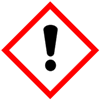 Irritant |
Signal Words: Warning
Hazard statements:
H302: Harmful if swallowed.
H315: Causes skin irritation.
H319: Causes serious eye irritation.
H332: Harmful if inhaled.
H335: May cause respiratory irritation
H402: Harmful to aquatic life.
Precautionary statements:
P260: Do not breathe dust/fume/gas/mist/vapors/spray.
P270: Do not eat, drink or smoke when using this product.
P271: Use only outdoors or in a well-ventilated area.
P273: Avoid release to the environment.
P280: Wear protective gloves/protective clothing/eye protection/face protection.
P301+P312: IF SWALLOWED: Call a POISON CENTER or doctor/ physician if you feel unwell.
P302+P352: IF ON SKIN: Wash with plenty of soap and water.
P304+P340: IF INHALED: Remove victim to fresh air and keep at rest in a position comfortable for breathing.
P305+P351+P338: IF IN EYES: Rinse cautiously with water for several minutes. Remove contact lenses, if present and easy to do. Continue rinsing.
P332+P313: If skin irritation occurs: Get medical advice/attention.
Section 3: Composition / Information on Ingredients
Product Name & Other Names: Chromic chloride hexahydrate or Chromium chloride hexahydrate
CAS No.: 10060-12-5
EINECS, EC Number: 233-038-3
Section 4: First Aid Measures
Always seek medical attention after first aid measures are provided.
Eyes: Immediately flush eyes with excess water for 15 minutes, lifting lower and upper eyelids occasionally.
Skin: Immediately flush skin with excess water for 15 minutes while removing contaminated clothing.
Ingestion: Call Emergency Medical immediately. Rinse mouth with cold water. Give victim 1-2 cups of water or milk to drink. Induce vomiting immediately.
Inhalation: Remove to fresh air. If not breathing, give artificial respiration.
Section 5: Fire Fighting Measures
It is non-flammable solid. When heated to decomposition, emits acrid fumes.
Suitable extinguishing media: Use water spray, alcohol-resistant foam, dry chemical, or carbon dioxide.
Special hazards arising from the substance or mixture: Hydrogen chloride gas, Chromium oxides
Protective equipment and precautions for firefighters: Use foam or dry chemical to extinguish fire. Firefighters should wear full fire fighting turn-out gear and respiratory protection. Cool container with water spray. Material is not sensitive to impact or static discharge.
Section 6: Accidental Release Measures
Personal precautions, protective equipment, and emergency procedures: Ventilate area of leak or spill. Avoid breathing dust/fumes/gas/mist/vapors/spray. Use individual protective equipment (waterproof boots, suitable protective clothing, safety glasses, etc.). Restrict unprotected personnel from the area. Prevent any contact with hot surfaces. Do not approach facing the wind.
Environmental precautions: Do not let the product enter drains, soil, or water sources.
Methods and materials used for containment Cleanup procedures and Storage: Contain spilled material. Cover with an inert, non-combustible absorbent material, (e.g. sand, earth, diatomaceous earth, vermiculite). Vacuum or sweep-up and remove to an approved disposal container.
Section 7: Handling and Storage Green
Precautions for safe handling: Apply according to good manufacturing and industrial hygiene practices. Ensure proper ventilation. In case of insufficient ventilation, wear suitable respiratory equipment. Wash thoroughly after handling. Do not drink, eat, or smoke while handling. Avoid contact with skin, eyes, and clothing. Minimize dust generation. Avoid breathing dust/fumes/gas/mist/vapors/spray. Keep container tightly closed. Avoid ingestion and inhalation. Use individual protective equipment (waterproof boots, suitable protective clothing, safety glasses, etc.).
Conditions for safe storage, including any incompatibilities: Store in cool, dry, and ventilated area away from heat sources and protected from sunlight in tightly closed original container. Keep air contact to a minimum. Store protected from heat, sparks and ignition sources and incompatible materials. Avoid contact with skin and eyes. Avoid inhalation of dust/mist/vapor. Do not store with incompatible materials like strong oxidizing agents and lithium.
Section 8: Exposure Controls / Personal Protection
Use ventilation to keep airborne concentrations below exposure limits. Have approved eyewash facility, safety shower, and fire extinguishers readily available. Wash hands thoroughly after handling material and before eating or drinking.
Exposure guidelines: OSHA PEL: 0.5 mg/m3, ACGIH: TLV: 0.5 mg/m3, STEL: Not Available.
Eye/face Protection: Wear appropriate protective eyeglasses or chemical safety goggles as described by OSHA.
Skin and body protection: Wear appropriate protective gloves and clothing to prevent skin exposure.
Respiratory Protection: Follow the OSHA respirator regulations.
Hygiene Measures: Handle in accordance with good industrial hygiene and safety practice
Section 9: Physical and Chemical Properties
Appearance: Solid. Green crystals or powder.
Odor: Odorless.
Odor threshold: Not applicable.
pH: No data found.
Relative density: around 2.87
Melting Point: 1150C (2102F).
Initial boiling point and boiling range: No data found.
Flash point: No data found.
Auto-ignition temperature: No data found.
Decomposition temperature: 1300C (2372F).
Upper/lower flammability or explosive limits: No data found.
Vapor pressure: No data found.
Vapor density: No data found.
Evaporation rate: No data found.
Flammability (solid, gas): No data found.
Partition coefficient: n-octanol/water: No data found.
Solubility(ies): Very slightly soluble in hot water.
Viscosity: No data found.
Section 10: Stability and Reactivity
Avoid heat and ignition sources.
Stability: Stable under normal conditions of use and storage.
Incompatibility: Lithium and nitrogen.
Shelf life: Indefinite if stored properly.
Section 11: Toxicology Information
Chromium Chloride:
LD50 [oral, rat]; 1790 mg/kg; LC50 [rat]; N/A; LD50 Dermal [rabbit]; N/A
Carcinogenicity: 3 - Group 3: Not classifiable as to its carcinogenicity to humans by IARC.
Mutagenic Effects: No data found.
Teratogenic Effects: No data found.
Developmental Toxicity: No data found.
Reproductive Effects: No data found.
Section 12: Ecological Information
Ecotoxicity (aquatic and terrestrial): Contains a heavy metal – toxic to terrestrial and aquatic plants and animals. Do not release to environment.
Results of PBT and vPvB assessment: This substance/mixture contains no components considered to be either persistent, bioaccumulative and toxic (PBT), or very persistent and very bioaccumulative (vPvB) at levels of 0.1% or higher.
Section 13: Disposal Considerations
Check with all applicable local, regional, and national laws and regulations.
Section 14: Transport Information
DOT USA: Not regulated by DOT.
Canada TDG: Not regulated by TDG.
ADR/RID: Not dangerous goods
IMDG: Not dangerous goods
IATA: Not dangerous goods.
Section 15: Regulatory Information
USA:
SARA 311/312 Hazards: See section 2.
California Prop. 65 Components: This product does not contain any chemicals known to State of California to cause cancer, birth defects, or any other reproductive harm.
Section 16: Other Information
European Labeling in Accordance with EC Directives:
H302: Harmful if swallowed.
H315: Causes skin irritation.
H319: Causes serious eye irritation.
H332: Harmful if inhaled.
H335: May cause respiratory irritation
H402: Harmful to aquatic life.
DISCLAIMER: The information and recommendations set forth herein are presented in good faith and believed correct as of the date hereof. It is compiled from various sources, and it is not necessarily all inclusive nor fully adequate in every circumstance. In addition, these suggestions should not be confused with nor followed in violation of applicable laws, regulations, rules, or insurance requirements applicable. This SDS MSDS sheet is intended only as a guide to the appropriate precautionary handling of the material by a professionally trained person using this product. Individuals receiving the information must exercise their independent judgment in determining its appropriateness for a particular purpose. This shall not constitute a guarantee for any specific product features and shall not establish a legally valid contractual relationship. In no case shall our company be liable to loss or damages by the product user.
Please visit Main Page of Chromic Chloride or Chromium Chloride Suppliers.
American Molecules, also known as ammol.org is a distributor, supplier and manufacturers' representative of all types of Pharmaceuticals, Functional Ingredients, Excipients and Specialty Chemicals in Texas USA. Our principals manufacture supply and export USP NF BP, Ph Eur, etc grades of chemicals pure and reagent grade, mineral fortifiers, FCC food grade. Tailor made particle size and customized specifications are offered. The principal's facility is having one or more of the certifications like FDA approval and GLP, cGMP, ISO9001, ISO14001, ISO/IEC 17025, ISO22000, FSSC 22000, ISO45001, FSSAI, Kosher, HALAL, COPP, WHO-GMP certified and Written Confirmation (WC) for export to Europe is available. The manufacturers suppliers and exporters observe WHO Good Manufacturing Practices and Good Laboratory Practices.
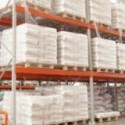
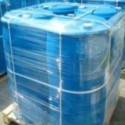
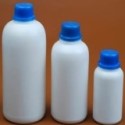
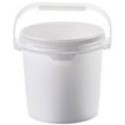

Suppliers and Manufacturers' Representative:

9910 Bent Oak Dr
Houston, TX 77040, USA
Call Toll Free: 1-855-55-AMMOL 1-855-552-6665
Email: info@ammol.org